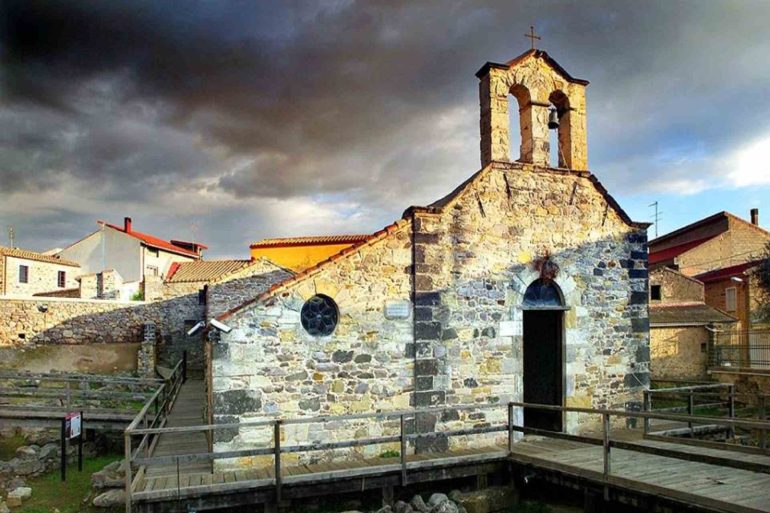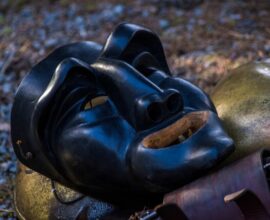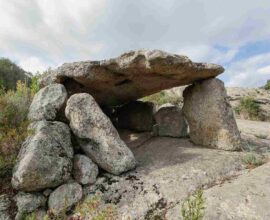Nuragic Sardinia: the evocative Sant’Anastasia’s sanctuary
Nuragic Sardinia: Sant’Anastasia sanctuary, echoes of prehistoric cults
At the heart of the village of Sardara, Sant’Anastasia’s sanctuary and its well reveal the true charm of Nuragic Sardinia.
Sardinia’s deep bond with its important Nuragic past is revealed in the heart of the village of Sardara, about fifty kilometres from Cagliari, in the Medio Campidano.
Right here stands the evocative Nuragic sanctuary of Sant’Anastasia, which takes its name from the nearby church that rests its foundations on the ancient settlement. The original building dates back to 500 AD and it is said that materials from Nuragic buildings were used for its construction.
The archaeological area, along with the Sanctuary of Santa Vittoria, is one of the most important in Nuragic Sardinia and today allows us to admire with our own eyes what was a vast settlement at the time. The excavations, over time, have brought to light a large curvilinear enclosure that rests largely below the current houses of Sardara.
The site was used both for religious and civil purposes from the Bronze Age to the Early Iron Age and was frequented as well in later periods. It now presents, within the enclosure, the remains of numerous huts, among which it is worth mentioning “hut 5” and “hut 1”.
“Hut 5”, with its two large rectangular niches and a bench seat, was equipped, at its core, with a sandstone column surmounted by two discs, having the function of supporting an altar in the shape of a Nuragic tower.
Moreover, near the entrance, a rectangular pit dug into the rock counter housed a jar full of bronze artefacts: most likely, it was a hut used as a “meeting room” for the heads of the village, built between the end of the eleventh and the beginning of the tenth century BC. While in front of “hut 1” a “clay bowl” was found with “ox-hide” type ingots, abandoned in the Iron Age.
The finds are kept in the Archaeological Museum of Villa Abbas and at the National Archaeological Museum of Cagliari where they can be admired and continue an exciting journey back in time.
But that’s not all: at the entrance of the archaeological excavations is Casa Pilloni, an ancient house whose main layout dates back approximately to the seventeenth century. The style is campidanese, with the typical structures of rural houses such as the barn, the haystack and the stables.
This is now used as a cultural centre, often offering exhibits that focus on the territory and its traditions, it houses the ticket office and a shop corner that offer books and local crafts.
The sacred well of Sant’Anastasia, the fulcrum of this site unique to Sardinia
The area has its fulcrum in the large and evocative sacred well, originally located inside the Church of Sant’Anastasia and excavated for the first time by the archaeologist Taramelli in 1913. On that occasion, the façade of the church was dismantled and moved a few meters to allow access to the well from the outside.
The well has a length of 12 meters, is oriented in a northeast-southeast direction and is built in basalt and limestone blocks. It consists of a circular chamber dug deep into the ground and covered by a tholos dome, which is accessed by climbing down a 12 steps staircase.
In more recent times, it was known as funtana de is dolus, “fountain of sorrows” as it was fed by an underground spring, Sa Mitzxedda, whose waters were considered curative and capable of healing all body’s ills. This was, therefore, a place of pilgrimage for the suffering and sick who here turned their hopes to the female divinity of the waters.
Today, a special mechanism drains the aquifer allowing visitors to descend to the bottom of the well and admire its solid and simple structure.
It is believed that on the outside of the well, an altar was built to celebrate religious rites. Inside the church, another votive Nuragic well is present. This was initially inside one of the village huts and it was rich in numerous offerings dating back to the final Bronze Age and the seventh century BC.
The archaeological complex of Sant’Anastasia is the perfect destination for a complete immersion in the fascinating Nuragic era in Sardinia and reliving the mysterious cult of water inside one of the most important well temples of Sardinian prehistory.
Would you like to discover the charm of Nuragic Sardinia and enjoy a fabulous holiday in an authentic paradise? Discover Forte Village Resort
Photo by: Monumenti Aperti






